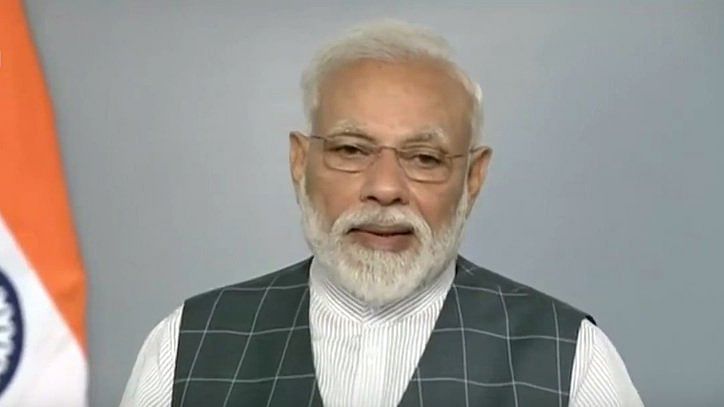New Delhi: India Wednesday successfully test-fired an anti-satellite missile, knocking off one of its own satellites 300 km in space, thereby joining an elite group — consisting of US, Russia and China — to possess such capability.
While India had developed the means to take out satellites in space during UPA rule, the Manmohan Singh government hadn’t granted permission to the research and defence establishment to carry out the Anti-Satellite (A-SAT) test, which is a game changer.
It was only after the Modi government came to power that the Defence Research and Development Organisation (DRDO) and other stakeholders were given the all-clear to bring the A-SAT programme to fruition.
Officials refused to specify when the actual clearance was given by the Modi government and also declined to come on record to say that the UPA did not give permission.
The Ministry of External Affairs (MEA), however, issued a FAQ on its website, which stated that “India has seen an accelerated space development programme since 2014”.
“The tests were done after we had acquired the required degree of confidence to ensure its success, and reflects the intention of the government to enhance India’s national security,” the FAQ reads.
Former DRDO chief Avinash Chander admitted that capabilities had been developed earlier but said the successful test was a huge moment for the organisation.
“The final proof of the capability lies in actual testing only. The systems were in place but that does not prove anything,” Chander told ThePrint. “Only when a go-ahead is given that systems are brought together and a test is carried out. Today’s test is a huge success to the DRDO.”
The A-SAT test
The test, ‘Mission Shakti’, was successfully held at the Dr A.P.J. Abdul Kalam Island, off the Odisha coast.
A DRDO-developed Ballistic Missile Defence (BMD) Interceptor Missile successfully engaged an Indian orbiting target satellite in Low Earth Orbit (LEO) in a ‘hit-to-kill’ mode.
The interceptor missile was a three-stage missile with two solid rocket boosters. Tracking data from range sensors have confirmed that the mission met all its objectives.
While there are other ways to demonstrate ASAT capabilities such as “fly-by tests” and jamming, India has relied on the “kinetic kill technology”.
Also read: India takes space leap, shoots down satellite 300 km away: Modi
Programme began in mid-2000s
It was in the mid-2000s that India secured Swordfish, an Indian active electronically scanned array (AESA) long-range tracking radar, specifically developed to counter the ballistic missile threat.
The radar is a derivative of the Israeli Green Pine long-range radar, which is the critical component of its Arrow missile defence system.
Swordfish, however, uses a number of indigenous systems.
It was when the DRDO began using it for the anti-ballistic missile systems, that it noticed that the radar was so powerful that it could even track satellites in lower Earth orbits of about 600 km.
When China carried out its anti-satellite missile test in 2007, the DRDO, sources said, rushed to the government stating that it too could develop such a missile.
Given the wide condemnation that China attracted, however, the DRDO was asked to focus on the anti-ballistic missile systems.
A-SAT, a derivative of ballistic missile defence
Explaining the A-SAT, sources said one way of looking at it is that the system is a spin-off of the BMD programme.
“The BMD needs to have the ability to detect, track and destroy an incoming ballistic missile. The same systems can be fine-tuned and enhanced for an A-SAT,” a source said.
Former DRDO chief V.K. Saraswat had in 2012 announced that India had by then all the building blocks for the anti-satellite capability. He had then explained that it is far more difficult to intercept ballistic missiles than it is to intercept satellites.
The former DRDO chief added that satellites follow a predictive path and that once they are tracked, their path becomes clear. “In the BMD project, we track and intercept a 0.1 square meter target over 1,000 km away,” he had said. “A satellite is 10 times larger and over 1 metre wide.”
Also read: These futuristic Chinese space denial weapons can disable or destroy opposing satellites
Why did India conduct the test?
India has a long-standing and rapidly growing space programme, which includes projects such as the Mangalyaan Mission to Mars and the Gaganyaan Mission, proposed to take Indians to outer space.
India has so far undertaken 102 spacecraft missions consisting of communication satellites, Earth observation satellites, experimental satellites, navigation satellites, apart from satellites meant for scientific research and exploration, academic studies and other small satellites.
“India’s space programme is a critical backbone of India’s security, economic and social infrastructure,” the MEA has stated in its FAQ. “The test was done to verify that India has the capability to safeguard our space assets. It is the Government of India’s responsibility to defend the country’s interests in outer space.”
It, however, also added that India had no intention of entering into an arms race in outer space.
